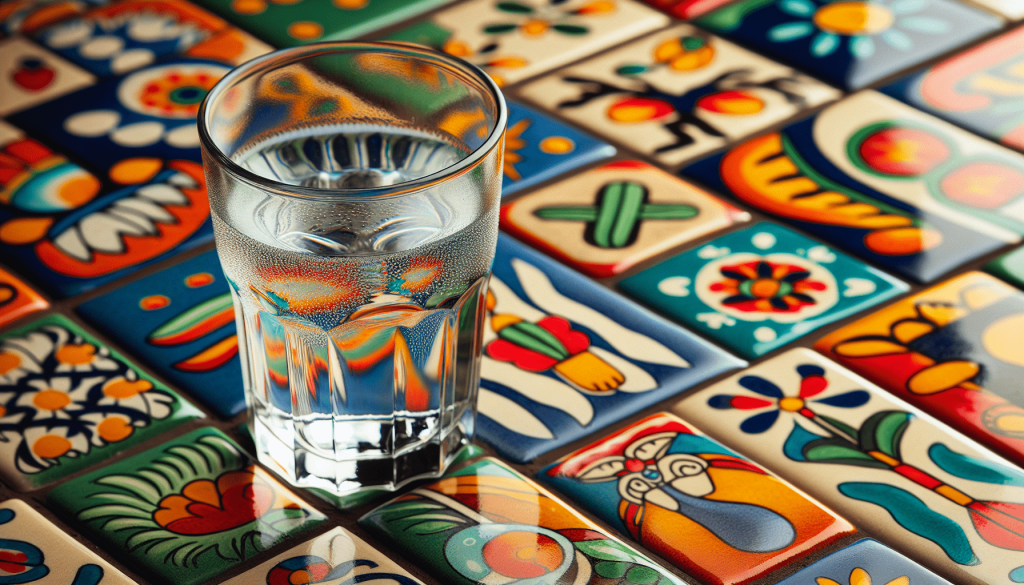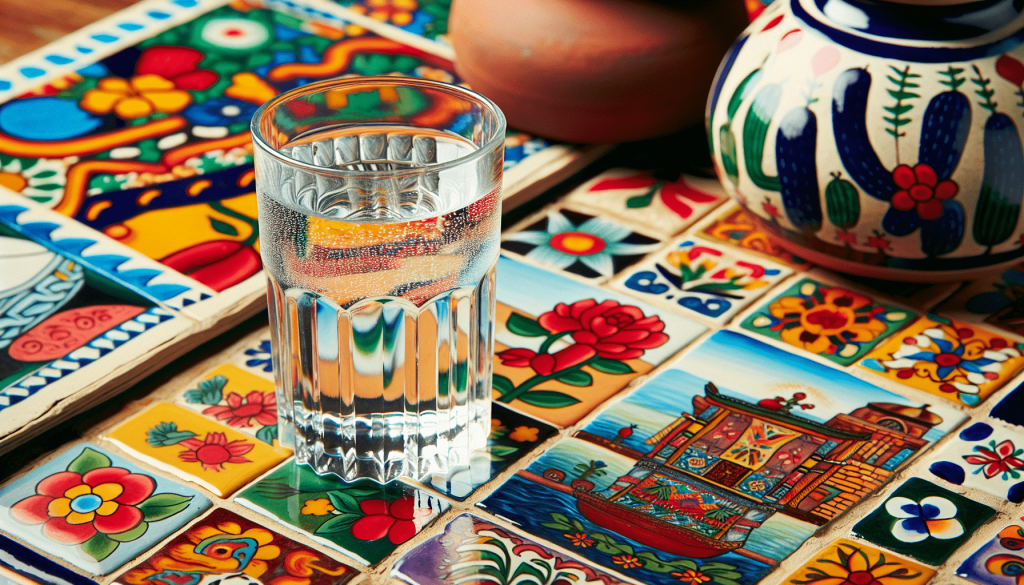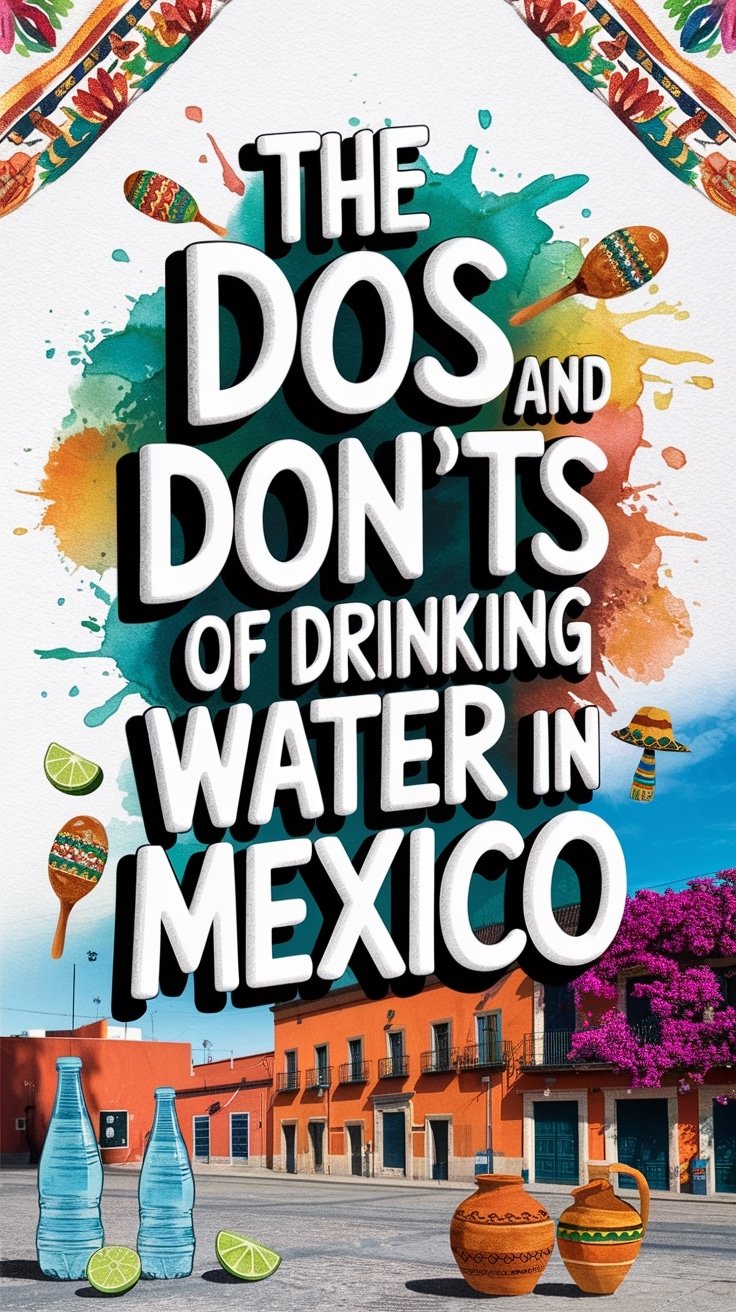Have you ever wondered about the safety of drinking tap water in Mexico? While it’s a popular travel destination with breathtaking landscapes and rich culture, understanding the nuances of tap water consumption is vital for your health. Here’s a comprehensive guide on the dos and don’ts of drinking tap water in Mexico, aimed at keeping you informed and hydrated without compromising your well-being.

Why Tap Water in Mexico is a Concern
Understanding the safety of drinking tap water in Mexico involves looking at a few key points. The quality and safety of tap water can significantly differ from one place to another due to various factors such as infrastructure, water treatment processes, and local regulations.
Infrastructure and Water Treatment
In Mexico, the infrastructure for water distribution and treatment varies widely. While some cities have advanced water treatment plants, rural and underdeveloped areas may lack such facilities. Even in well-developed places, issues with old or poorly maintained pipelines can introduce contaminants into the drinking water.
Water Quality Concerns
Certain contaminants commonly found in Mexican tap water include bacteria, viruses, and pollutants. While local residents might have built some resistance to these microorganisms, visitors are often at risk of gastrointestinal issues and other illnesses if they consume untreated tap water.
The Dos of Drinking Water in Mexico
Taking the proper precautions can ensure you stay healthy and enjoy your time in Mexico. Here are some essential dos to keep in mind.
Do Drink Bottled Water
One of the simplest and most effective ways to avoid waterborne issues is to stick to bottled water. Always purchase sealed, branded bottles from reputable stores to ensure you’re getting clean and safe drinking water.
Do Carry a Water Filter
Investing in a good-quality portable water filter can be a lifesaver. Modern water filters can remove a wide range of contaminants, including bacteria and viruses, making tap water safe to drink. Brands like LifeStraw and Sawyer are popular choices among travelers.
Do Use Water Purification Tablets
Water purification tablets are an easy, lightweight option for treating unsafe water. Just drop a tablet into your water bottle, wait for the specified time, and you’ll have safe drinking water. These tablets are particularly useful for those who enjoy hiking or exploring remote areas where bottled water might not be available.
Do Boil Water When Necessary
Boiling water is a time-tested method to kill harmful microorganisms. If bottled water or purification tools aren’t available, boiling tap water for at least 3 minutes can make it safe for consumption.
Do Educate Yourself
Knowing which areas have better water quality can help you make informed decisions. Resort towns such as Cancun and Playa del Carmen often have treated water in hotel facilities. However, exercise caution even in these areas, especially when dining out or using tap water in public spaces.
The Don’ts of Drinking Water in Mexico
Avoiding certain practices can further minimize your risk of consuming contaminated water. Here are some don’ts to keep in mind.
Don’t Drink Tap Water Directly
No matter how reliable your source might seem, it’s generally advised not to drink tap water directly in Mexico. Tap water can easily get contaminated through faulty infrastructure or human error during the treatment process.
Don’t Use Tap Water for Brushing Teeth
Even using tap water for brushing your teeth can expose you to harmful microorganisms. Always use bottled or purified water for oral hygiene to avoid accidental ingestion of contaminants.
Don’t Use Ice Cubes Made from Tap Water
Ice cubes are often made from tap water, meaning they can still harbor harmful bacteria and viruses. It’s safer to avoid ice in your drinks unless you’re sure it’s made from purified water.
Don’t Rely on Lemon or Alcohol to Kill Germs
Some believe that adding lemon or a strong alcoholic beverage to water will kill any harmful microorganisms. This is a myth. Neither lemon juice nor alcohol can effectively purify water and should not be relied upon as a safe measure.
Don’t Forget to Ask Locals
Locals can offer invaluable advice about safe drinking practices in their area. Don’t hesitate to ask for recommendations on safe water sources, especially if you’re venturing off the beaten path.
Understanding Local Water Standards and Regulations
Familiarizing yourself with local water standards and regulations can further assist in making safe choices regarding tap water in Mexico.
National Water Commission (CONAGUA)
Mexico’s National Water Commission, known as CONAGUA, is the central body responsible for managing the nation’s water resources. CONAGUA sets guidelines for water treatment and quality standards, but enforcement and implementation can be inconsistent.
Water Quality Monitoring
While some municipalities have robust water quality monitoring systems, others may lack the necessary resources. It’s worth checking recent water quality reports and news from reputable sources to get the current status of water safety in your destination.
Bottled Water Regulations
Mexico has strict regulations for bottled water, and most brands comply with these standards. However, it’s good practice to inspect the bottle for any signs of tampering and to buy from reliable stores to ensure authenticity.

Safe Water Alternatives
Exploring alternatives to tap water can be beneficial, especially if you’re staying in Mexico for an extended period.
Safe Water Delivery Services
In urban areas, several companies offer home delivery services for large jugs of purified water. These can be more economical and environmentally friendly compared to constantly purchasing bottled water.
Water Purification Systems
If you find yourself frequently in Mexico, investing in a home water purification system might be a viable option. These setups can range from simple faucet attachments to more complex under-the-sink systems, providing you with clean water on demand.
Utilizing Refill Stations
Many eco-conscious travelers and locals turn to water refill stations, which are becoming increasingly common in cities and tourist spots. These stations often provide purified water at a fraction of the cost of bottled water and help reduce plastic waste.
Practical Tips for Drinking Water Safely in Mexico
Implementing these practical tips can help you minimize risks associated with drinking water in Mexico.
Always Inspect Bottles
Before consuming any bottled water, ensure that the seal is intact and the bottle hasn’t been tampered with. Inspecting the water clarity can also give you an idea of its quality.
Use Safe Water for Cooking
When preparing food, especially if it involves dishes that don’t get cooked (like salads), always use bottled or purified water. Boiling vegetables or pasta in purified water can also decrease the risk of contamination.
Carry a Water Bottle
Keeping a personal water bottle with you can conveniently ensure you always have access to safe drinking water. Portable filters or purification devices can be built into these bottles for added security.
Inspect Ice Cubes
In upscale restaurants and hotels, ask if the ice cubes are made with purified water. While you can’t always be completely sure, establishments that cater to tourists often take such precautions.
Signal Sensitivity
If you’re particularly sensitive to water quality changes, listen to your body. Symptoms such as nausea, cramps, or diarrhea might indicate that you’ve consumed contaminated water and should serve as a warning sign to check your water sources more carefully.
Dealing with Water-Related Illnesses
Despite your best efforts, you might still encounter issues. Here’s what to do if you suspect you’ve consumed contaminated water.
Symptoms to Watch For
Common symptoms of consuming contaminated water include diarrhea, cramps, nausea, and vomiting. Dehydration can be a severe side effect, particularly in hot climates, so monitoring your health is crucial.
Immediate Steps to Take
If you experience symptoms, start by drinking fluids that contain electrolytes. Oral rehydration solutions are excellent for this purpose. Avoid most sugary drinks and alcohol, as they can worsen dehydration.
Seeking Medical Help
If symptoms persist for more than a couple of days, it’s wise to seek medical advice. Local pharmacies can offer over-the-counter remedies, but consult a healthcare professional for tailored advice and treatments.
Summary Table of Dos and Don’ts
Below is a handy reference table to summarize the best practices for drinking water in Mexico:
| Dos | Don’ts |
|---|---|
| Drink bottled water | Drink tap water directly |
| Carry a water filter | Use tap water for brushing teeth |
| Use water purification tablets | Use ice cubes made from tap water |
| Boil water when necessary | Rely on lemon or alcohol to purify |
| Educate yourself about the area | Forget to ask locals for advice |
Conclusion
Navigating the dos and don’ts of drinking tap water in Mexico might seem daunting initially, but with the right preparation and practices, you can enjoy your trip without any water-related issues. Stick to the guidelines mentioned above, stay vigilant, and make informed choices to ensure that your travel experience remains pleasant and healthy. Safe travels!
